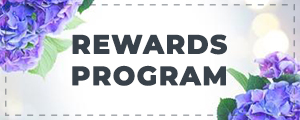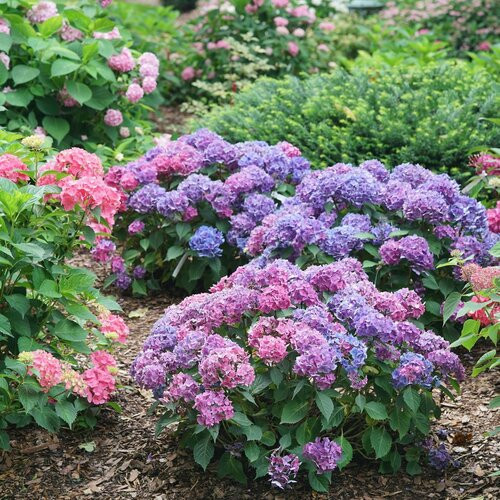| Hydrangea macrophylla 'SMNHMP' |
USDA Zone: 5-9 |
An endless drive for improvement is what motivates our big-leaf hydrangea breeding, so for us to make a new introduction, a plant has to be signficantly better than what's already available. That's why Let's Dance Big Band hydrangea has been added to the line: it combines bodaciously big mophead flowers with pure, true colors.
Top reasons to grow Let's Dance Big Band Hydrangea:
- Withstands winter cold better than others
- Big, colorful flowers
- Improved reblooming, for more flowers for a longer period
Bloom Time: Summer
Continuous Bloom or Rebloomer
Salt Tolerant
Common Name: Bigleaf Hydrangea
|
Key Feature
|
Light Needs | Landscape Uses |
 |
 |
|
|
|
|
| More About Let's Dance Big Band Hydrangea |
| Height: 24-30 inches |
Spread: 24-30 inches |
Flower Colour: Blue / Pink Shades |
|
Landscapes, perennial gardens, low hedges - big-leaf hydrangeas are versatile garden plants for anywhere you need some summer color.l. Soil and exposure: Big-leaf hydrangeas should be planted in moist but well-drained soil - they cannot tolerate wet conditions. It's a good idea to have a 2-3" layer of mulch in all climates. Plant with at least some sun each day; the hotter your climate, the more shade the plant can withstand. Pruning: big-leaf hydrangeas cannot be pruned at any point in the year without negatively impacting the flowering. As such, it's best to avoid pruning this type of hydrangea altogether. If portions of the plant were damaged from winter weather, they can be removed in spring when it is clear where the new growth is emerging. Fertilizing: The key to getting reblooming hydrangeas to produce new-wood flower buds is to keep them growing vigorously all summer. Hence, fertilizer can be beneficial. Apply a granular rose fertilizer in early spring, when the ground has thawed, and again in late spring. Never fertilize after late July; that can interfere with the plant going dormant. Note that when grown in a container, it may not perform exactly as indicated on the tag - this is to be expected. Also note that when growing plants in outdoor containers and baskets, they may require more frequent waterings than they would in the yard or garden. Be aware that in our climate, most plants cannot be expected to survive the winter if left in containers outdoors, and this plant is no exception. NOTE: Some flowers and plants may be harmful or poisonous to people or pets if touched or ingested. If you require more information before placing an order, please let us know in advance. |













